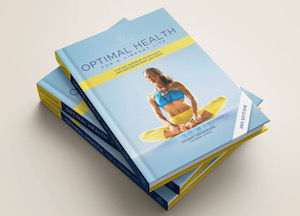Articles, In the Press, Internal Medicine, Mental Health, Resources, Yoga Medicine® News
A Beginner’s Guide to Patanjali’s Yoga Sutras
By Sarah Di Ganci for Yoga Medicine®.

The Yoga Sutras of Patanjali offer a succinct reference outline for the practitioner of yoga to mark their progress in their unique spiritual experience. It’s a really comprehensive list of aims with which we can discover our Self in this world. If we see the world and all beings in it as one with our Self, then we can potentially be free from suffering and find even more freedom in remembering who we are – really.
You could think of the Yoga Sutras as a reference book to pick up and find whichever Sutra may be more relevant in our lives at that moment. Sometimes we can read a whole book and remember a fraction of the content or misread something over and over again, but the information only reveals itself when we’re actively seeking knowledge in the context of life’s demands.
One of the beautiful things about Patanjali’s writings is that they provide a unified multifaceted container of principles for the many schools of yoga and can be an encouragement to the enlightened or to the diamond in the spiritual rough. The text is always there to help us polish our practice of yoga, and this is my humble summary of The Yoga Sutras of Patanjali.
Book One: Samadhi Pada – Contemplation
On starting a journey towards becoming a yogi, we have to at least be aware of how our perception and others’ perceptions have made an impression on how we make up our mind up about things, judge things and then make decisions or act based on these perceptions.
We may directly experience something for ourselves or trust in the recounting or hearsay from another whom we trust. We may also not know something as we think we do if we have wrongly perceived something. We may believe in something that simply is not fact. We may recall or recollect something, which as we know, can be selective.
It is the goal of the yogi to base perception on truth. This could mean that we are not to be influenced by external stimuli, wants or desires with the aim of hearing something, observing something and not drawing erroneous conclusions. It might mean to see something for what it is and not be swayed by a perceived connection or feelings of attachment.
We can strive to practice non-attachment in order to be free from influence and to steady the mind. This can become easier by balancing the Gunas, which are qualities of energy and represented by Tamas (darkness and chaos), Rajas (activity and passion) and Sattva (beingness and harmony). The eventual outcome might be to even become free from the Influence of the Gunas to reach a state of Samprajnata Samadhi or distinguished contemplation.
The practice of non-attachment may lead to Samadhi by total devotion and dedication to Isvara (Lord, God, Supreme Soul), which can be a theistic or non-theistic spiritual focus. Chanting the sacred sound of ‘Om’ in meditation can be an aid to blocking out all else to reach the Self.
Book Two: Sadhana Pada – Practice
In this book, Patanjali gives directions on how to lay the foundations for Samadhi by starting to build the layers brick by brick, and then to have your house in order to be ready to sit and receive. We can try to minimize and overcome obstacles to realize life for what it is and to let go of attachment and aversions by dissipating the ego through meditation.
The Karmas are our experience, present and future, determined by our actions. A constant fluctuation of the Gunas results from discrimination between this and that and what we may like at one moment and have an aversion to the next. Suffering can be avoided with steady practice of non-attachment balanced in the Gunas. We can also detach from our perceptions to try to be free from ignorance – less attachment, manipulation, and influence – to live our real truth.
Practicing the Eight Limbs of Yoga can ready the mind, body and spirit for Samadhi or the superconscious state. We can practice Pratipaksha Bhavan, to cultivate a positive thought every time a negative thought enters the mind, in order to manifest and experience supreme joy and self-realization. We can practice asana to ready the body to sit with concentration for meditation to withdraw the senses’ focus on the external world of stimuli and come into the Self.
Book Three: Vibhuti Pada – Accomplishments
This book outlines all of the accomplishments which can be achieved through the practice of yoga. These accomplishments are The Siddhis (supernatural powers, abilities, attainments) which can be cultivated by practicing the final three limbs of Raja Yoga: Dharana (concentration), Dhyana (meditation) and Samadhi (complete integration).
Combining all three in the practice of Samyama can guide us towards the light of knowledge by steadying the continuous input of new information to the mind. Observing or being a witness to one’s Self through Samyama can lead to knowledge, insight and a powerful sense of Self. With more practice, the need to focus on external or mind object becomes unnecessary.
The final state of Samadhi is reached where nothing is needed. Observe the Self to know the Self and then ultimately to see the true light of the Self after the veil of external influence is lifted. Kaivalya (detachment) is the ultimate goal of Raja yoga and is achieved when the seed of attachment is gone. Of course, in life there are many necessary distractions and attachments and so we just visit the practice to come inward as a means to manage our connection with our Self.
Book Four: Kaivalya – Absoluteness
The final book brings everything together by explaining how the yogi’s state of being results in absoluteness. The Kaivalyam is the embodiment of the qualities of absoluteness and unlimitedness. The goals achieved by the practices of the Eight Limbs of Yoga and in particular the last three limbs, bring the yogi into an impressionless Karmic state resulting from a mind born of meditation. At this stage the yogi may not worry about death as the desire to live is eternal.
This book also explains the Karmic fate of those who do not take into consideration their life’s journey and actions in affecting their next life. Perhaps they will unintentionally repeat or perpetuate a scenario or manifest a less than desirable outcome.
If everyone perceives things differently and there is only one subject and one object, then we cannot rely on anyone else’s perception, and, at the very least, we should question our own.
We can only do this by practice and meditation.
What are the chances of the practitioner of yoga reaching these Cosmic Conditions? Practically speaking, we can learn, study, question, practice, meditate, live an all-encompassing absolutely limitless life of non-attachment, to the best of our ability and with the best of intention. It is for the practitioner of yoga to find their actuality in the theory.
Where to Begin
There are so many inspiring translations and interpretations for Patanjali’s great work in codifying a guide to daily life as a practitioner of yoga. It can be helpful to focus on a spiritual anchor to which you can relate and which holds true to you, as a starting point.
A suggestion would be to sit with one of the 196 Sutras which may be resonating with you in a particular moment and see what comes up. I hope at the least some introspection and a fair amount of liberation from suffering. Remember that only you can keep the spiritual reference books together with your own unique bookends of practice and intention for the ultimate aim of yoga – union.
If you’re interested in reading more extensively on this topic, please see:
- The Yoga Sutras of Patanjali Translation and Commentary by Swami Satchidananda, which talks the reader through the fascinating and beautiful Sanskrit written language.
- Yoga Sutras of Patanjali by Mukunda Stiles, which offers a concise and poetic rendition.













Pingback: dark168
Pingback: Big Bass Splash
Pingback: ปั้มติดตาม
Pingback: เว็บหวย 2525